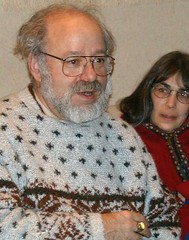Adam Drewnowski at the University of Michigan researched whether chocolate triggers the production of opioids. Opioids are chemicals, such as those found in opium, that produce a feeling of well-being (euphoria). Drewnowski found that eating chocolate causes the brain to produce natural opiates, which dulI pain and increase a feeling of well-being. If the receptors in the brain that signal the presence of opioids were blocked, chocolate bingeing decreased. It was not shown, however, if this was caused by the high fat or sugar content of chocolate candy.

Researchers at the Neurosciences Institute in San Diego, Emmanuelle diTomaso (she's now at Harvard University) and Daniele Piomelli (he's now at the University of California, Irvine) looked into the chemical components of chocolate. They found three substances in chocolate that 'could act as cannabinoid mimics either directly (by activating cannabinoid receptors) or indirectly (by increasing anandamide levels).' What do all these big words mean? A little background information may help make this more understandable.
A receptor is a structure on the surface of a cell that interacts with certain chemicals. Receptors have different shapes, and thus interact with specific molecules. diTomaso describes this interaction like this: 'the active compound will lock itself to the protein and that triggers a reaction inside the cell.' Cannabinoids are substances that act like cannabis, also known as marijuana. The active chemical in marijuana is called tetrahydrocannabinol (THC), and there are receptors in the brain that bind THC. When THC binds to these receptors, the person feels 'high.' Anandamide is a lipid that is normally found in the brain; it can bind to the same receptors as THC and thus produce a similar effect to 'being high.'
Does chocolate affect the brain in the same way marijuana does? There are chemicals in chocolate that act like THC, resulting in production of dopamine, a neurotransmitter. However, there is no THC in chocolate, so you aren't breaking the law by eating chocolate. One of the compounds in chocolate is anandamide, which is already produced in your brain. If anandamide is already in your brain, then why don't you feel happy all the time? Well, anandamide is broken down quickly, so it isn't around long in your brain to make you smile. But chocolate may extend the feelings of well being. Piomelli's research indicates that there are two chemicals in chocolate which inhibit the natural breakdown of anandamide. This may be a reason why we like to eat chocolate! And dark chocolate contains more of these compounds than milk chocolate.
Eating a bar of chocolate will not make you feel giddy or 'high.' This may be because anandamide and the two compounds that enhance its effect are short-lived and localized in the brain. THC activates many receptors throughout the brain, so it has a much larger effect. Chocolate's effect is limited because anandamide is not present all over the brain. Scientists doubt if anandamide and other chemicals in chocolate have much effect because they are present only in small amounts. Christian Felder at the National Institute of Mental Health estimates that a 130-pound person would have to eat 25 pounds of chocolate at one time to get any marijuana-like effect. Also, because these compounds are eaten, it's difficult to determine how much enters the bloodstream and actually reaches the brain.
There may also be other explanations for the feelings caused by chocolate and these may have nothing to do with cannabinoids, anandamide, or receptors. There are many other components in chocolate that may play a role in its popularity. Eating chocolate may be pleasurable because of a unique interaction among a few of its components.
Chocolate also contains phenylethylamine, a chemical related to amphetamines. Like amphetamines, this chemical causes blood pressure and blood-sugar levels to rise, resulting in a feeling of alertness and contentment. Phenylethylamine has been called the 'love-drug' because it quickens your pulse, as if you are in love. Caffeine in chocolate may also cause feelings of alertness and a pounding heart. Other stimulants in chocolate include theobromine and methylxanthines. These caffeine-relatives are weaker than caffeine-you'd have to eat more than 12 Hershey bars to get as much caffeine as there is in one cup of coffee. All of these stimulants increase the activity of neurotransmitters in the brain.
Whatever the true reason for chocolate's popularity, scientists will continue to investigate the sweet mysteries of cacao. In the meantime, grab a bar for yourself and a box for your Valentine."
Here is the beginning of my post. And here is the rest of it.



No comments:
Post a Comment